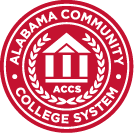Applicable Laws
- I.D.E.A (Individuals with Disabilities Education Act) Section 504, Rehabilitation Act of 1973
- Section 504, Rehabilitation Act of 1973, ADA (Americans with Disabilities Act of 1990, Title 11) ADAAA (American with Disabilities Act Amendment Act of 2008)
Required Documentation.
- HIGH SCHOOL: I.E.P. (Individual Education Plan); 504 Plan;School provides evaluation at no cost to student. School conducts evaluations at prescribed intervals.
- Colleges and Universities:Varies depending on the disability; high school I.E.P. and 504 are not sufficient; must include the testing on which the accommodations are based. Student must get evaluation at own expense and student must provide approved documentation, no more than three (3) years old.
Identification of Disability
- HIGH SCHOOL: Student is identified by the school and is supported by parents and teachers. Primary responsibility for arranging accommodations belongs to the school.
- Colleges and Universities: Student must self-identify to the office responsible for Disability Services. Primary responsibility for self advocacy and arranging accommodations belongs to the student.
Parental Role
- HIGH SCHOOL: Parent has access to student records and can participate in the accommodation process. Parent advocates for the student.
- Colleges and Universities: Parent does not have access to student records without student’s written consent; student must initiate and complete. Student advocates for self and must have frequent contact with their counselor.
Instruction
- HIGH SCHOOL: Teachers may modify curriculum and/or alter pace of assignments. Frequent use of multi-sensory tools. Weekly testing, mid-term, final, and graded assignments and homework. Attendance taken and reported
- Colleges and Universities: Professors are not required to modify curriculum design. Tends to be lecture style; may or may not use multi-sensory approach; labs required for some courses. Testing and assignment frequency varies. Attendance is taken and absences are limited to a specific number of hours; if you exceed this number of hours, you may receive a lower grade.
Grades and Tests
- HIGH SCHOOL: Grades may be modified based on curriculum.
- Colleges and Universities: Grades reflect the quality of work submitted; student must request testing accommodations at the beginning of the semester.
Transportation
- HIGH SCHOOL: School provides transportation at no cost.
- Colleges and Universities: Student must arrange transportation. Special transportation service is available through the City of Birmingham.
Conduct
- HIGH SCHOOL: Disruptive conduct may be accepted.
- Colleges and Universities: Disruptive behavior and inability to abide by the institution’s code of conduct are deemed “not qualified” and can be dismissed.
Most Important Differences in Summary.
- HIGH SCHOOL: I.D.E.A. is about Success. High School is mandatory and free.
- Colleges and Universities: A.D.A. is about Equal Access. Postsecondary is voluntary and the student is responsible for the cost.



